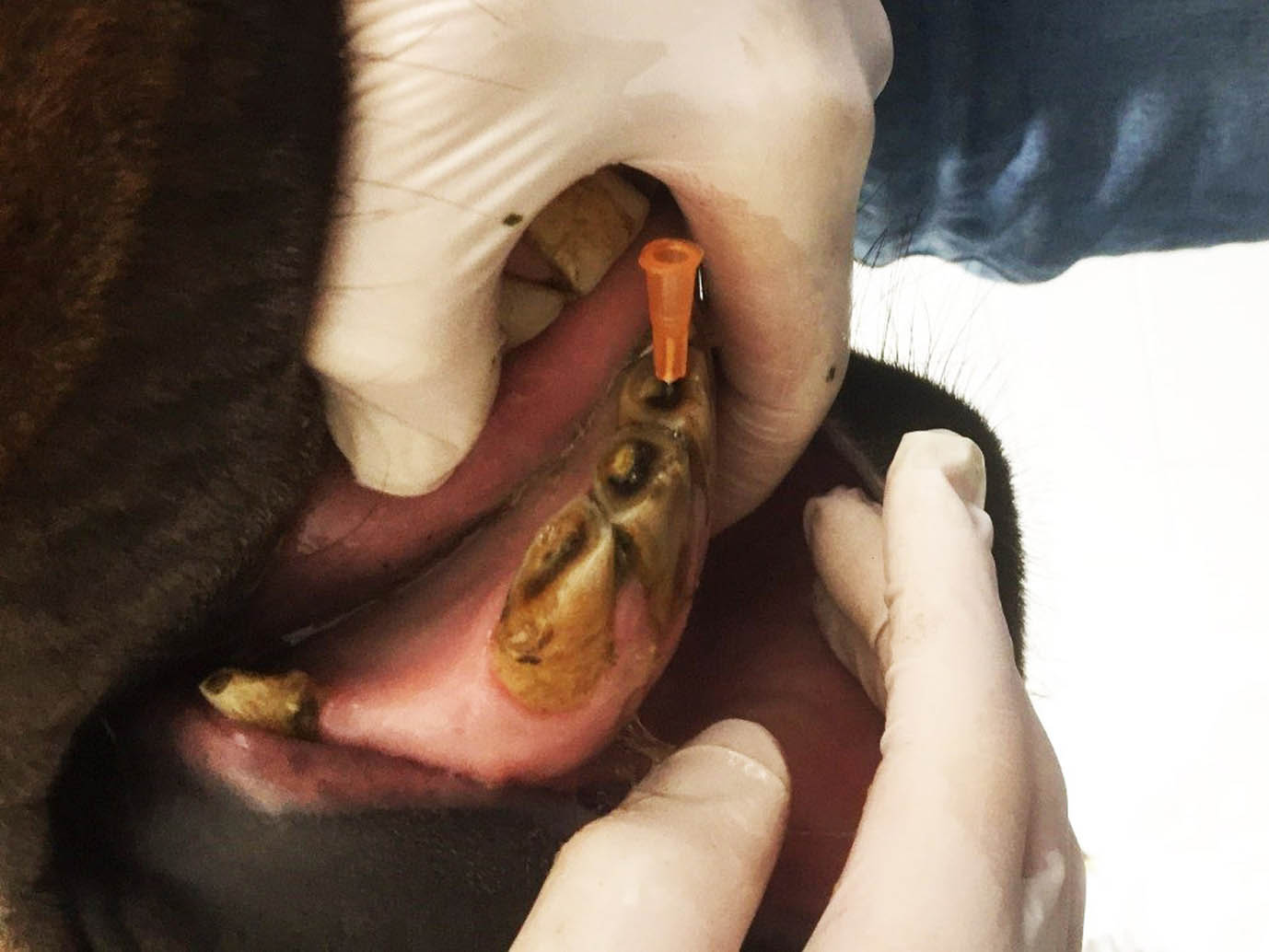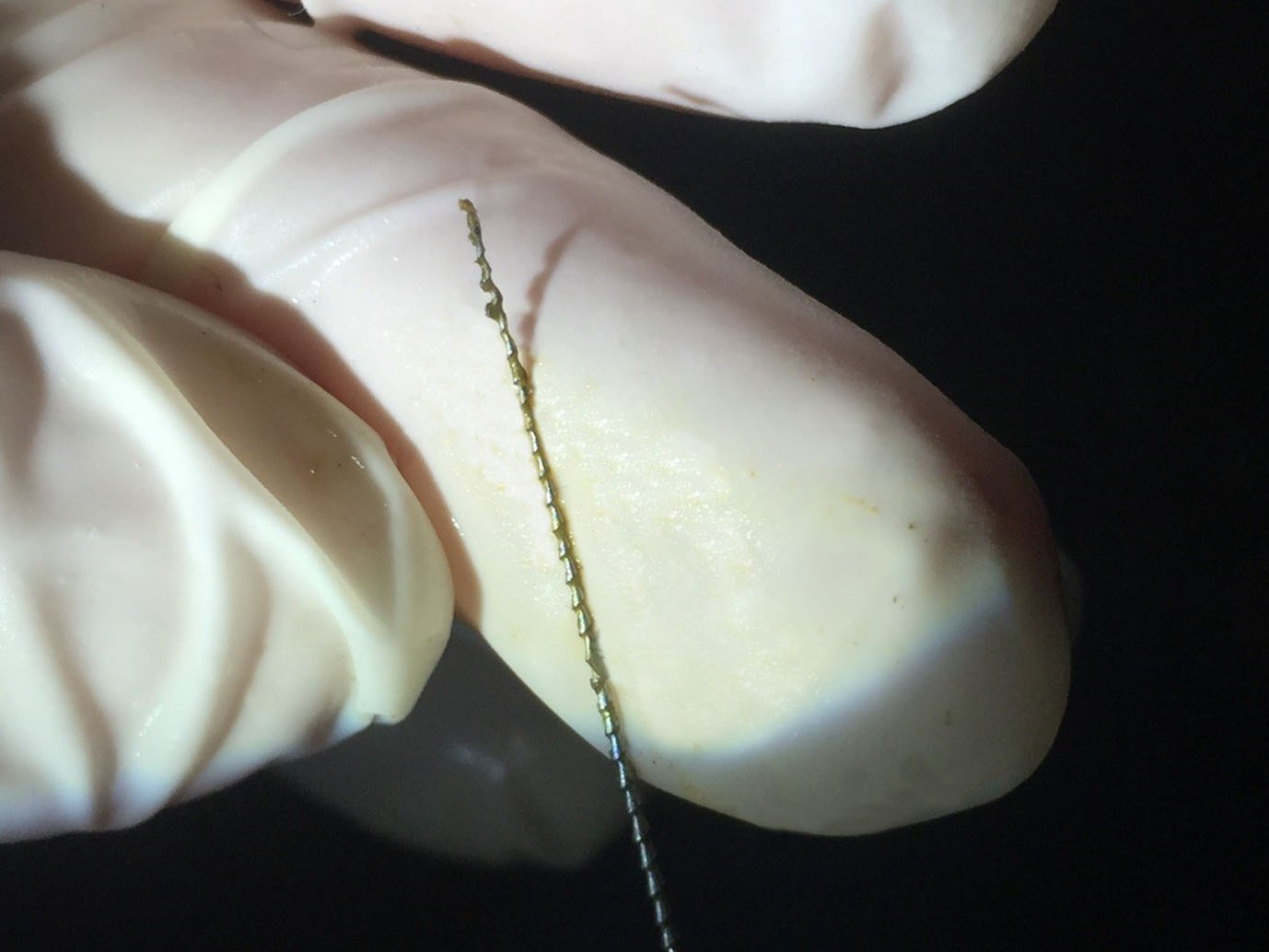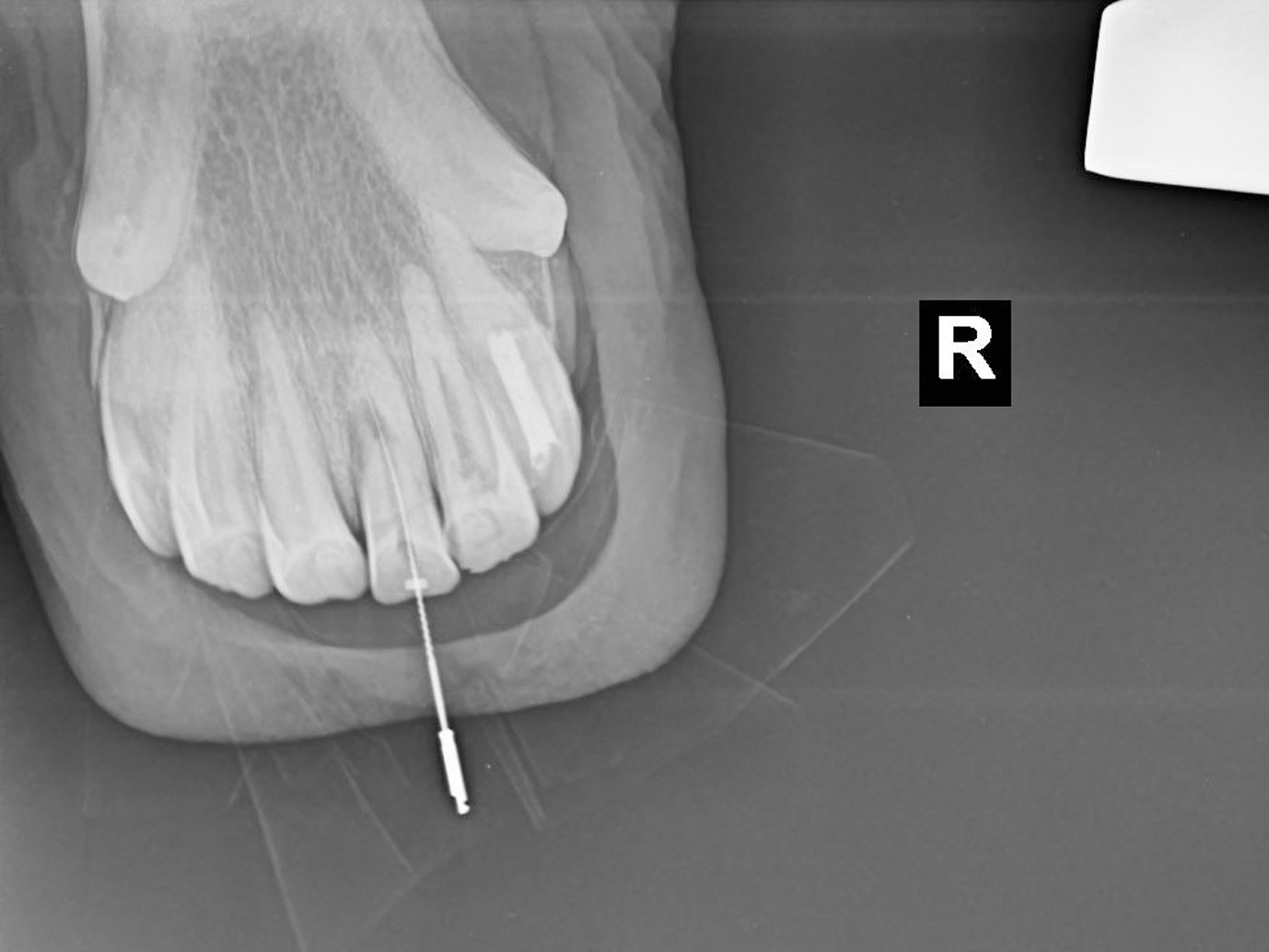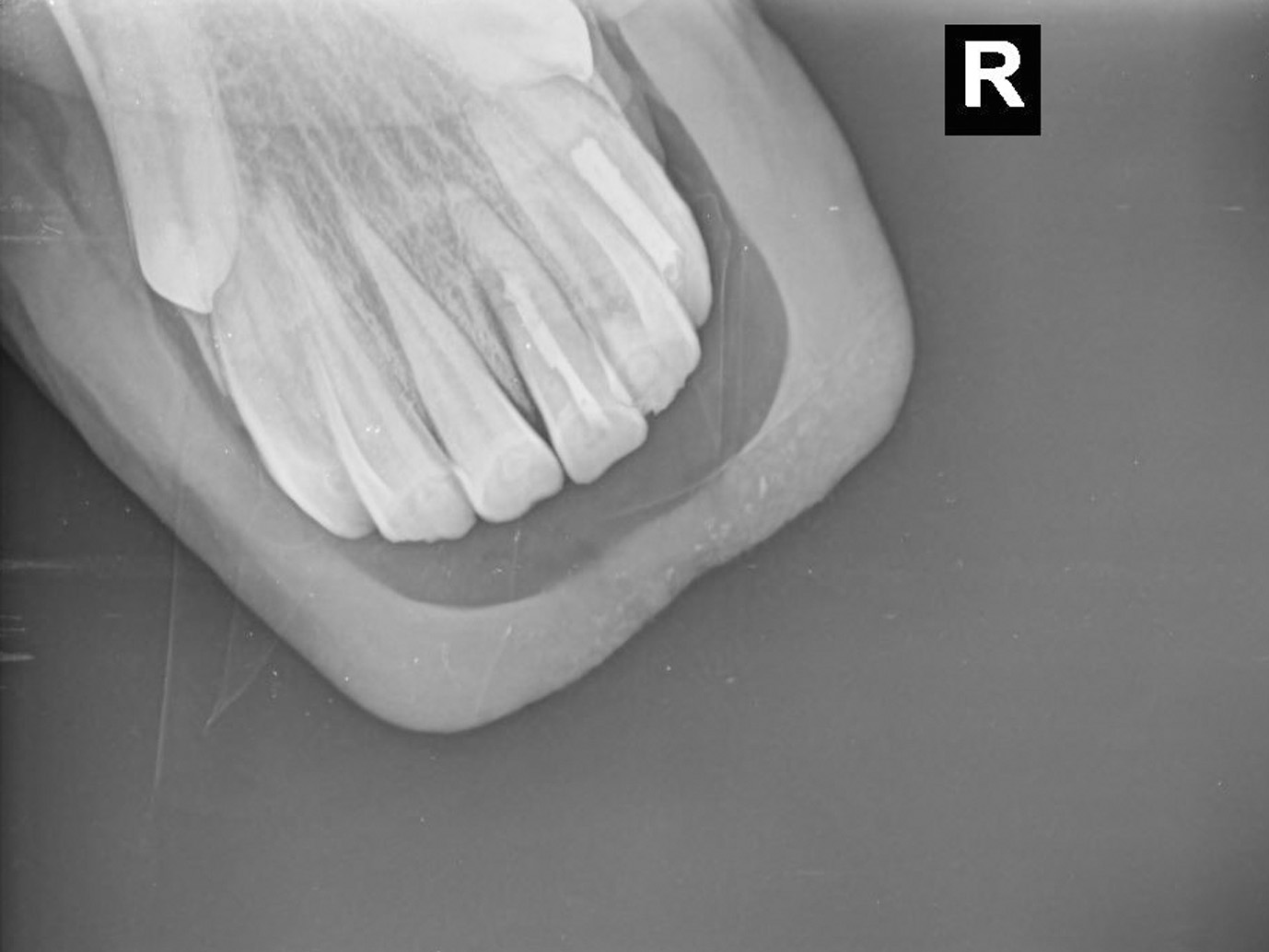Endodontics
If the pulp tissues (the blood vessels and nerves within the tooth) are damaged, left untreated, a painful infection can take hold within the tooth, often leading to a tooth root abscess. If we can see the horse in the very early stages, ideally within 24-48hrs of a traumatic injury, we can often save the living tooth by placing a protective layer (or ‘pulp cap’) over the pulp tissue to help prevent infection.
In many cases we are presented with horses where the injury or insult has happened months or years earlier and the tooth is dead. In these cases, it is unfortunately too late to save the vital pulp tissues but we can often save the tooth by performing endodontics or doing a ‘root canal treatment’.
This procedure removes the infection from within the pulp canal and fills it with an inert substance to prevent infection from entering the tooth. The tooth will still be dead as we can’t put a new nerve in there but the teeth continue to function as normal teeth and erupt into the mouth.
By preserving the functional tooth, we prevent the problems of extracting teeth where opposite teeth become tall as they aren’t worn down, providing a better functional and cosmetic result.






